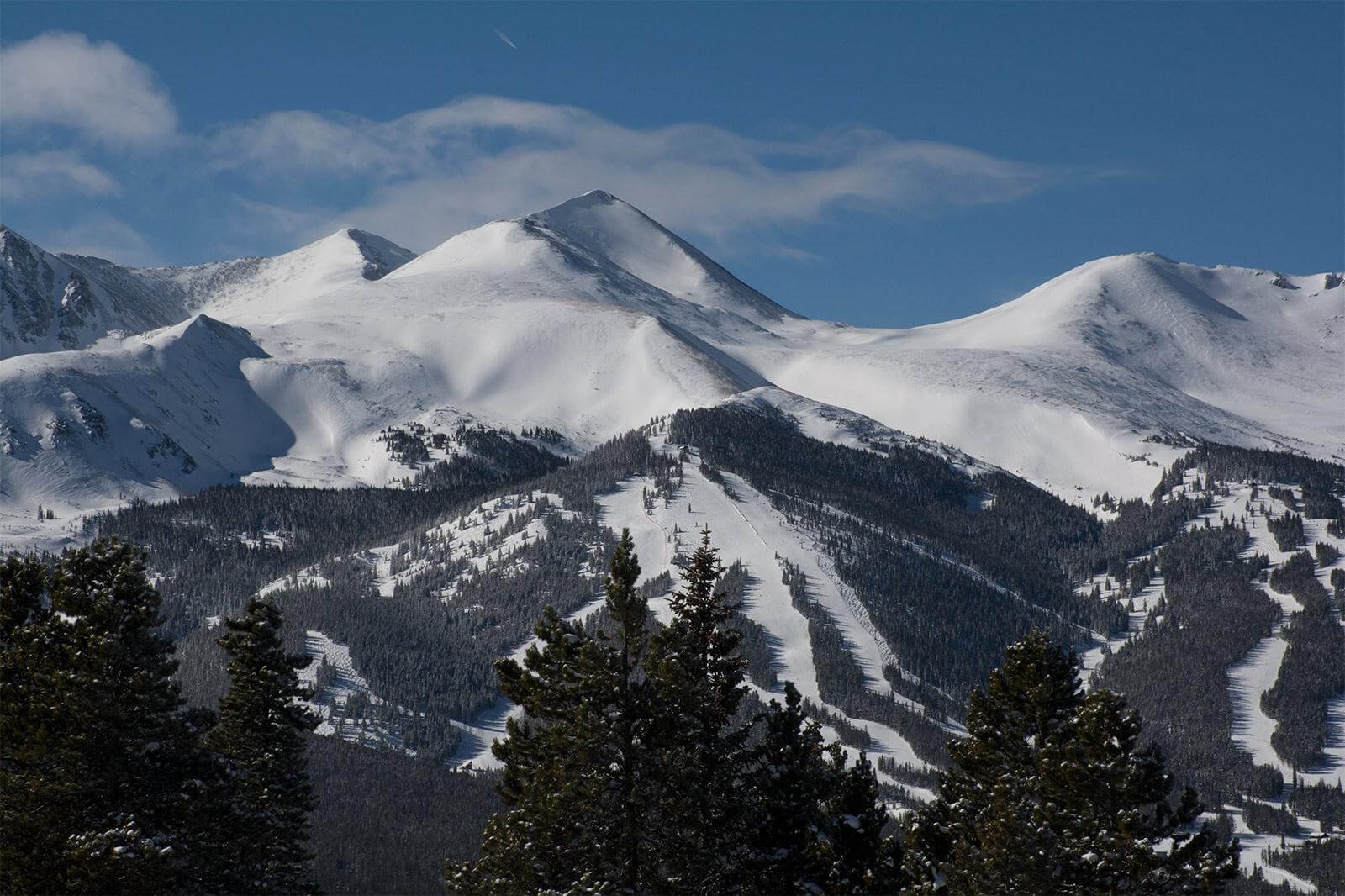Breckenridge: Historic Victorian town with 21st Century Spirit
Breckenridge offers the benefits of a sophisticated city with recreational opportunities as great as any in the world starting with a world-class ski resort that encompasses peaks 10 through 6 of the Tenmile Range. Breck is surrounded by national forest. The following guide will help you navigate the privately-owned land when searching for homes for sale in the Breckenridge area. Breckenridge, in the eyes of a local, is everything from Farmers Korner to Blue River.
Throughout this guide, we have links to hiking trails and access to great skiing from these neighborhoods, information about views, and the micro climates of Breckenridge neighborhoods as they spread out from the historic downtown to the backcountry.
Breck Atlas of the Subdivisions and Neighborhoods
Tour around the compass points in the following summaries of the neighborhoods, what locals would call Breckenridge- the miles from Blue River to Farmers Korner. Find links (in red) to geographic regions of town and what makes them special. You can get more detailed information when you visit these pages including thumbnails of the real estate actively for sale in this area, as well as a list of all the neighborhoods and subdivisions, with links to more specific info about each one. The oldest part of Breckenridge is the historic district, but let's start looking into the sun.
South of Downtown Breckenridge
Heading south from downtown, you reach a final stoplight. You'll have the option to turn right, to the west into Warriors Mark. Turning left at this intersection will take you up Boreas Pass Road through clusters of single-family homes. These homes are still within the boundaries of the town of Breckenridge and are detailed on our southside guide. Continuing east on Boreas Pass Road, you will go further afield from the center of town, up to a larger neighborhood known as Woodmoor.
Beyond this southern border of town are homes that everyone would still think of as Breckenridge, but which are technically 'unincorporated Summit County'. Within the first mile south, the town of Blue River and it's many subdivisions are characterized by larger home sites, lots of tree cover, access to the Blue River that runs through them, and great views of Baldy to the east and the Tenmile Range to the west. Many families live in this area year round, although it was originally populated by people seeking a summer vacation mecca.
Cross-country ski and hiking trails start in these neighborhoods and go east to Boreas and Baldy mountains and west into the Tenmile Range. If hiking, mountain biking and cross-country skiing are more important than getting on the gondola, this is a great part of Breckenridge to search for homes for sale.
Further south, you're still in Summit County until you reach the summit of Hoosier Pass. The homes between Blue River and Hoosier Pass are generally a little more rural, at a little higher altitude, and more private. In general, homes for sale south of Blue River are a little less pricey.
Southwest, Warrior's Mark
Warriors Mark is a diverse neighborhood of condos (near the Peak 9 base area), townhouses, and single-family homes that typically go up in price as they get higher in altitude. You'll find condos around the Maggie Pond, condos on the Columbine Loop, and then townhomes and single-family homes as you head up Broken Lance (the main road through Warriors Mark), which meanders along the Blue River and up to Warriors Mark West. At Warriors Mark West, you'll find larger, single family homes with excellent views and a fun way for intermediate to expert skiers to ski in/out to Peaks 9 and 10 via some out-of-bounds, ungroomed trails.
West, Slopeside Breckenridge
The first ski runs cut were just west of Main Street, Breckenridge, on the west side of the Blue River, where little development existed in 1960. To access the new Breckenridge Ski Resort, the westerly road out of town was improved and is now called Ski Hill Road, a gentle set of switchbacks that run from Main Street to the base of Peak 8. A parallel ski run call Four O'Clock Run (and road) covers similar distance more directly. All around this run, all along the lower pitches of the ski hill are a variety of ski condos, single-family homes and townhomes, some closer to downtown and some higher up at the base of Peak 8.
North of Downtown Breckenridge
Northwest, adjacent to national forest and settled on the flanks of peaks 7 and 6 of the Tenmile Range is the neighborhood called Peak 7. Mostly single-family homes, and a few duplexes, Peak 7 is largely populated year round by locals and local families. Peak 7 is a neighborhood made up of several small subdivisions developed over the course of the past 50 years. There are some dramatic and steep lots, but also many cul-de-sacs of flat home sites with varying amounts of sun and tree cover. Trails from this area link quickly to the popular Peaks Trail that runs from Breckenridge Ski Resort to the town of Frisco.
On the east side of Highway 9, the main road through Summit County, newer subdivision like The Highlands, mingle with some older single-family homes near the Breckenridge Golf Course along Tiger Road. Tiger Road is currently grouped with some other unique subdivisions in the northeast quadrant of Breckenridge. Homes for sale in northeast Breckenridge have access to the public open space called the Golden Horseshoe and are located in and just outside it. The Swan River was a major mining area in 1880s Breckenridge and dredge boats, old mines, ghost towns and great hiking and biking trails are the backyard for homeowners in this area. Restoration of the Swan River through this area began in 2016.
The Highlands at Breckenridge is an animal with its own stripes, and so we have a page just for its big lots/big homes neighborhood that encompasses all the various iterations of The Highlands like Gold Run, Gold Course, Discovery Hill, etc.
East of Downtown Breckenridge
Boreas Pass Road takes you up to Woodmoor, but through some close and convenient single-family neighborhoods like Breck South and Brooks Hill. You'll find these subdivision lists on the right side of the Breckenridge community page.
Downtown Breckenridge and Near-Ins
Breckenridge is a designated National Historic District with streets on a traditional grid for about 4 blocks east of Main Street. The areas west of Main and the Blue River suffered huge fires in the late 1800s and were not rebuilt until the ski area came into existence in 1961. That area then became the slopeside neighborhood. In additional to refurbished and enlarged old homes, infills and new homes in the core, the downtown expanded to a plateau east of High Street that is called Weisshorn or Gold Flake. Great views and a steep trail to town make these neighborhoods feel like in-town living.
Breckenridge Neighborhoods organized geographically
- N: The Highlands
- N: North / Tiger Road
- E: Boreas Pass & Woodmoor
- Historic Center
- W: Slopeside
- W: Peak 7
- W: Shock Hill / Peak 8
- SW: Warriors Mark
- S: South to Hoosier Pass
- S: Blue River
How Breckenridge Real Estate Developed
The Breckenridge real estate landscape today evolved from decisions made in the early 1960s when Kansas lumber tycoons and European ski instructors came together to design and build the Breckenridge Ski Resort. The perfect ski runs they imagined were just west of the historic Main Street Breckenridge. They improved the westerly road out of town, Ski Hill Road, making it a gentle set of switchbacks that now take skiers, walkers and buses to the base of Peak 8. Wisely, they created one long run (Four O'Clock) that connected the slopes on Peak 8 to town. The private land on these lower pitches of the ski hill became the perfect place to develop ski homes and condos.
The downtown expanded to the west with homes for locals and families that needed a ski home larger than the classic ski condo. Family homes were also built adjacent to forest service land on Peak 7. Today, the ski resort has grown closer in proximity to those homes to the north, and large chateau-style condominium buildings now sit at the base areas of Peaks 7 and 8.
In the 1980s, ski lifts were strung over Peak 9 and several multi-story condominium buildings were constructed at the base of these lifts on the southwest side of the historic town. Here, around Maggie Pond, condominium complexes in many different styles of architecture fan out around the bottom of the Beaver Run and QuickSilver ski lifts.
Across Hoosier Pass, you'll find (in this order) Placer Valley, the town of Alma, Valley of the Sun, and other Alma-Fairplay subdivisions, the town of Fairplay, and several Park County communities accessible from Colorado Highway 285.
Breckenridge History in Brief
Founded in 1859, Breckenridge is the oldest continually-occupied community in the Colorado mountains. Its past includes gold and silver mining, dredge boats, the itinerant preacher John Lewis Dyer, a daring daylight robbery by Pug Ryan and his band of desperados, the discovery of Tom's Baby (Colorado's largest gold nugget), and of course, skiing since the 1960's. The Victorian town includes one of the state's largest historic districts, with 254 registered buildings, including the Carter Museum, the Barney Ford Museum and the Briggle House Historic Center.
Other towns sprung up in the 1860s to support the miners working to find gold and silver. A train came from Denver and other points afar over Boreas Pass, and gave rise to towns like Dyersville and other ghost towns that still remain. These towns give a faded version of what life might have been like during the mining boom that continued through the 1890s. The Panic of 1893 started the Bust that followed the Boom. Silver lost its value and many Colorado mining towns dwindled to the uninhabited ghost towns they are today. Many of the mines around Breckenridge produced gold and, as its value rose, mining became more sophisticated and the dredge boats came to town. Remnants of one those dredges can be found on the Tiger Dredge trailhead.
Dredging turned the Blue River valley into a rock pile and sent the river underground. The Blue wasn't restored to the river it is today until the Army Corp of Engineers and Breckenridge town government completed the job in the 1980s.
Hydraulic mining took many forms and reshaped some of the foothills as well as the Blue River. The Iowa Hill trail gives a great look at this historic mining and particularly the project that took over this hill until 1918. Mechanized mining was a boom of its own.
The Great Depression and WWII burst the mining bubble, but skiing brought everyone back! Starting in 1946, Arapahoe Basin built the first post-war lift in Colorado. Lumber magnets from Kansas City started Breckenridge Ski Resort which opened for business in December of 1961. Some of Arapahoe Basin's founders opened Keystone Resort in 1970. Last to the party was Copper Mountain which became the fourth of the "Ski the Summit" resorts in 1972.
Be sure to sign up or log in with Breckenridge Associates to take advantage of our free, world-class search tools.

